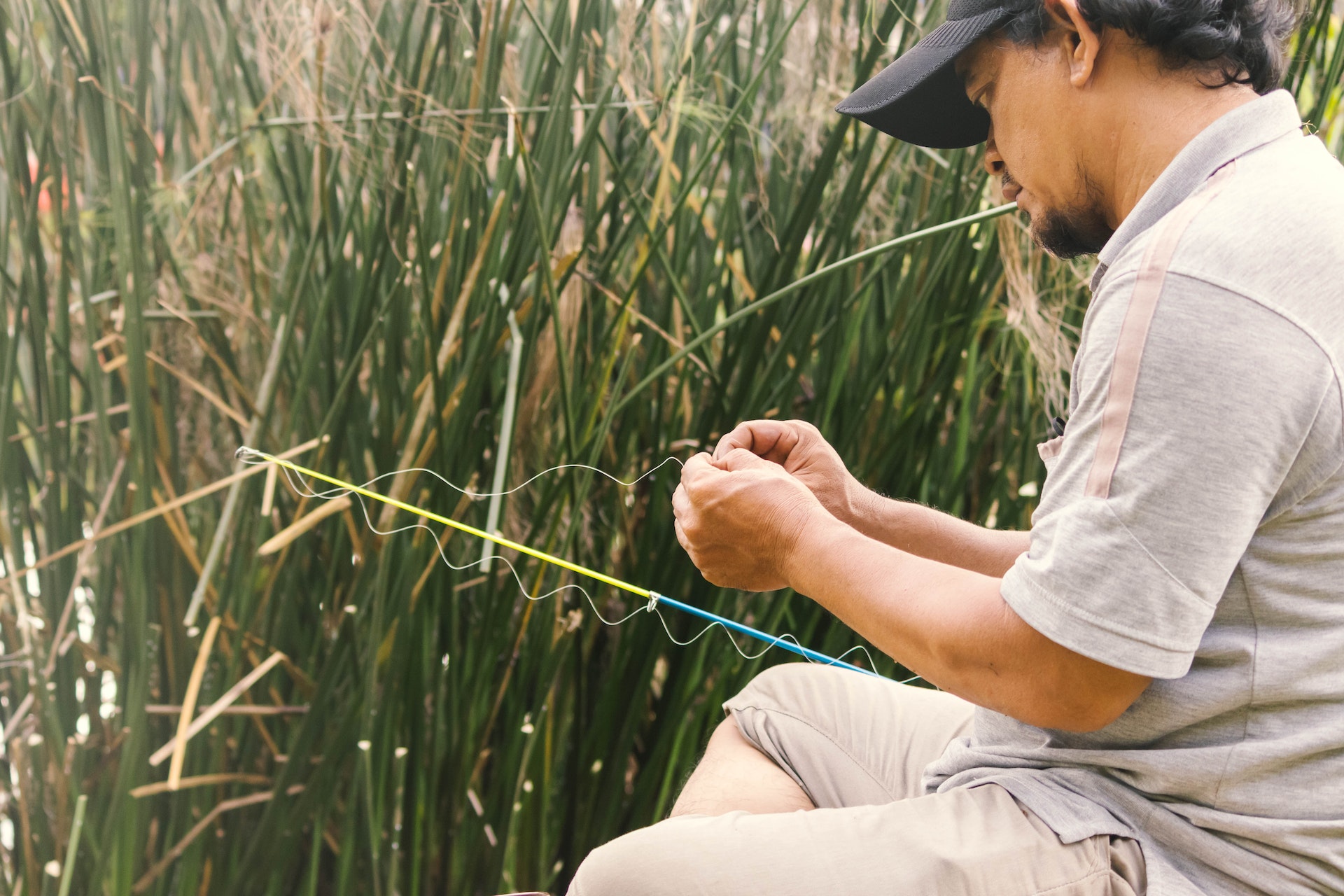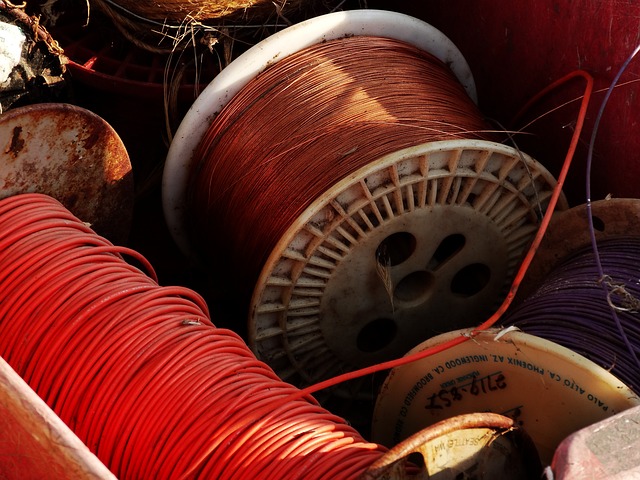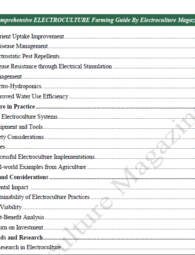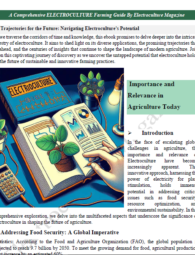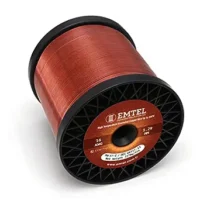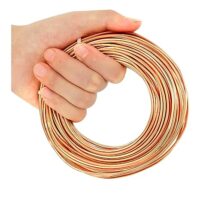Welcome to ElectroCulture Magazine, your ultimate destination for all things related to the fascinating world of electroculture. We are excited to have you join our vibrant community of forward-thinking individuals dedicated to exploring innovative farming practices. In our latest feature, we embark on an exciting journey into the realm of electroculture, providing you with an in-depth tutorial on the creation of electroculture rods.
Whether you possess a green thumb and a passion for gardening or simply harbor a curiosity about the cutting-edge techniques transforming modern agriculture, this article is designed to captivate your interest. Join us as we uncover the remarkable potential of electricity in revolutionizing plant growth and development.
Electroculture, often considered an uncharted frontier, holds the promise of revolutionizing the agricultural landscape. It leverages the power of electricity to stimulate and enhance the growth of plants, offering a sustainable and environmentally friendly approach to farming.
Our exploration will take you deep into the heart of electroculture, unveiling its principles, methods, and applications. You’ll gain insights into the science behind this groundbreaking technique, as well as practical guidance on how to create your own electroculture rods. We invite you to embark on this thrilling adventure with us, where science meets agriculture, and innovation transforms the way we nurture and cultivate plants.
So, whether you’re an avid gardener seeking to elevate your cultivation skills or simply intrigued by the possibilities that electroculture presents, fasten your seatbelt as we embark on this electrifying journey. Together, we will unlock the potential of electroculture and pave the way for a greener, more sustainable future in farming. Stay tuned for a captivating exploration of this electrifying frontier!
What is electroculture rods?
Electroculture rods, a cutting-edge gardening tool, harness the power of electrical currents to stimulate plant growth. These innovative devices consist of copper wire wrapped around a non-conductive material, typically a wooden dowel rod. The copper wire serves as an antenna, and the electrical current is generated through the conductivity of the soil moisture.
The Science Behind ElectroCulture
The core concept behind electroculture is that the application of electrical currents can enhance soil’s capacity to retain moisture and nutrients. This improved soil quality, in turn, fosters healthier and more robust plant growth. While electroculture’s potential benefits have garnered scientific interest, further research is essential to fully comprehend its mechanisms and impact.
Utilizing ElectroCulture Rods
There are several ways to employ electroculture rods in your gardening endeavors. One approach involves simply inserting the rods into the soil near your plants. This allows the electrical currents to interact with the soil and influence its properties. Alternatively, you can connect these rods to an external power source like a battery, thereby amplifying the electrical current. This heightened electrical activity may offer additional advantages for your plants.
The Evolving Field of ElectroCulture
Electroculture rods represent a relatively recent addition to the arsenal of gardening techniques. Consequently, ongoing debates surround their efficacy. Nevertheless, numerous gardeners who have experimented with electroculture have reported positive outcomes. If you’re seeking a natural and innovative approach to bolster your plant growth, electroculture is a compelling avenue to explore.
While electroculture is an exciting frontier in agriculture, it is essential to remember that its results can vary depending on factors such as plant species, soil composition, and environmental conditions. Experimentation and observation are key components of successfully integrating electroculture into your gardening routine.
Buy Our Handcrafted Electroculture eBook Now…
In conclusion, electroculture rods offer a unique and promising way to enhance plant growth through the application of electrical currents. As this field continues to evolve, it holds the potential to revolutionize how we nurture and cultivate our gardens. If you’re intrigued by the prospect of tapping into nature’s electrical potential to boost your gardening efforts, electroculture is certainly worth considering as a natural and sustainable option for your green thumb pursuits.
There are a few different ways to use electroculture rods. One way is to simply insert them into the soil around your plants. Another way is to connect them to a battery or other power source. This will create a stronger electrical current, which may have even more benefits for your plants.
Electroculture rods are a relatively new gardening technique, and there is still some debate about their effectiveness. However, many gardeners who have used them report seeing positive results. If you are looking for a natural way to boost your plant growth, electroculture is worth a try.
Here are some of the benefits of using electroculture rods:
- Increased plant growth
- Improved plant health
- Increased crop yields
- Reduced need for fertilizers and pesticides
- Increased drought tolerance
If you are interested in trying electroculture, there are a few things you should keep in mind:
- Use high-quality copper wire.
- Insert the rods into the soil at least 6 inches deep.
- Water your plants regularly.
- Monitor your plants for any signs of stress.
If you are concerned about the safety of electroculture rods, you can consult with a qualified electrician or horticulturist.
You can get highly efficient COPPER WIRE from here…
how to make electroculture rods?
Electroculture rods, also known as electroculture devices or electrostatic rods, are used in a technique called electroculture, which is believed to enhance plant growth through the application of electrical energy. While electroculture is not widely recognized or scientifically proven, some people experiment with it as an alternative agricultural method. Here’s a general guide on how to make electroculture rods:
- Gather your materials. You will need:
- Copper wire, 14 gauge or thicker
- Dowel rods, 1/2 inch or thicker
- Wire strippers
- Tape
- Optional: Magnets
- Strip the insulation off the ends of the copper wire.
- You can use wire strippers for this, or you can simply use a sharp knife.
- Strip about 1/2 inch of insulation off each end.
- Wrap the copper wire around the dowel rod.
- Start at one end of the dowel rod and wrap the copper wire around it spirally, overlapping each layer by about 1/2 inch.
- Continue wrapping the wire until you reach the other end of the dowel rod.
- If you are using magnets, you can insert them into the spiral of copper wire as you wrap it.
- Secure the copper wire in place with tape.
- Wrap the tape around the copper wire and dowel rod several times to secure the wire in place.
- Insert the electroculture rods into your garden.
- You can insert them around the edges of your garden bed, or you can insert them in a grid pattern.
- The distance between the rods will depend on the size of your garden.
- Water your garden as usual.
- The electroculture rods will not work if the soil is dry.
To arrange copper wire, dowel rods, wire strippers, tape, and optional magnets, you can follow these steps:
- Strip the insulation off the ends of the copper wire. You can use wire strippers for this, or you can simply use a sharp knife. Strip about 1/2 inch of insulation off each end.
- Wrap the copper wire around the dowel rod. Start at one end of the dowel rod and wrap the copper wire around it spirally, overlapping each layer by about 1/2 inch. Continue wrapping the wire until you reach the other end of the dowel rod. If you are using magnets, you can insert them into the spiral of copper wire as you wrap it.
- Secure the copper wire in place with tape. Wrap the tape around the copper wire and dowel rod several times to secure the wire in place.
- Arrange the electroculture rods in your garden. You can insert them around the edges of your garden bed, or you can insert them in a grid pattern. The distance between the rods will depend on the size of your garden.
Here are some additional tips for making electroculture rods:
- Use the thickest copper wire you can find. This will help to ensure that the rods are able to conduct electricity effectively.
- Make sure that the copper wire is in good condition. If the wire is corroded or damaged, it will not be able to conduct electricity effectively.
- Insert the electroculture rods into the soil at least 6 inches deep. This will help to ensure that the rods are able to make contact with the soil moisture.
- Water your garden regularly. The soil should be moist, but not soggy.
Electroculture rods can be a great way to improve the growth of your plants. If you are looking for a natural way to boost your plant growth, electroculture is worth a try.
Summery
Creating electroculture rods is an interesting project that has the potential to significantly alter agricultural operations, in conclusion. You may start a journey to harness the power of electroculture and unleash the full potential of your crops by following the detailed instructions provided in this article.
When working with electrical components, safety must always be prioritized. Make sure you comprehend electrical concepts well and take the appropriate safety steps to shield both you and others from potential dangers. For the purpose of making dependable and effective electroculture rods, it is crucial to follow suggested criteria and use the right supplies and equipment.
Despite the fact that this manual offers a strong basis, it’s crucial to understand that electroculture is a discipline that promotes exploration and adaptability. Because every agricultural setting is different, you might need to modify the rods’ positioning and setup to increase their efficiency.
Accept the potential advantages of electroculture, such as boosted plant vitality, quickened growth, and enhanced disease resistance. Keep a watchful check on your crops, track their development, and adapt as necessary. Dedication, observation, and an openness to learning are necessary steps on the path to creative and sustainable agricultural techniques.
Let your electroculture rods serve as a mark of your dedication to researching cutting-edge farming methods. Enjoy the delight of seeing your crops flourish and deliver generous harvests while helping to create a more sustainable future. Accept electroculture’s potential and take pride in being a pioneer in this exciting sector.
